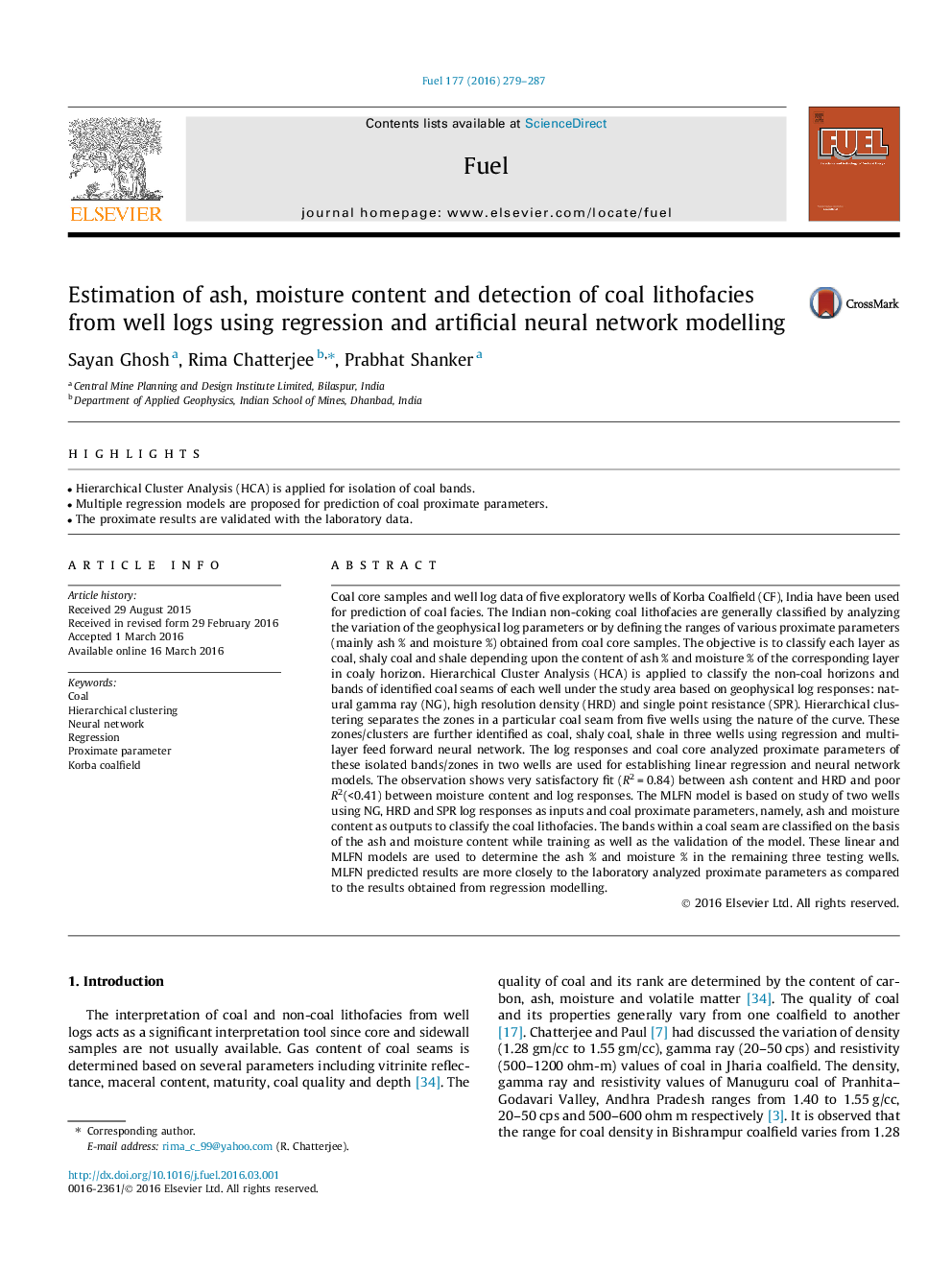| کد مقاله | کد نشریه | سال انتشار | مقاله انگلیسی | نسخه تمام متن |
|---|---|---|---|---|
| 205142 | 461097 | 2016 | 9 صفحه PDF | دانلود رایگان |
• Hierarchical Cluster Analysis (HCA) is applied for isolation of coal bands.
• Multiple regression models are proposed for prediction of coal proximate parameters.
• The proximate results are validated with the laboratory data.
Coal core samples and well log data of five exploratory wells of Korba Coalfield (CF), India have been used for prediction of coal facies. The Indian non-coking coal lithofacies are generally classified by analyzing the variation of the geophysical log parameters or by defining the ranges of various proximate parameters (mainly ash % and moisture %) obtained from coal core samples. The objective is to classify each layer as coal, shaly coal and shale depending upon the content of ash % and moisture % of the corresponding layer in coaly horizon. Hierarchical Cluster Analysis (HCA) is applied to classify the non-coal horizons and bands of identified coal seams of each well under the study area based on geophysical log responses: natural gamma ray (NG), high resolution density (HRD) and single point resistance (SPR). Hierarchical clustering separates the zones in a particular coal seam from five wells using the nature of the curve. These zones/clusters are further identified as coal, shaly coal, shale in three wells using regression and multilayer feed forward neural network. The log responses and coal core analyzed proximate parameters of these isolated bands/zones in two wells are used for establishing linear regression and neural network models. The observation shows very satisfactory fit (R2 = 0.84) between ash content and HRD and poor R2(<0.41) between moisture content and log responses. The MLFN model is based on study of two wells using NG, HRD and SPR log responses as inputs and coal proximate parameters, namely, ash and moisture content as outputs to classify the coal lithofacies. The bands within a coal seam are classified on the basis of the ash and moisture content while training as well as the validation of the model. These linear and MLFN models are used to determine the ash % and moisture % in the remaining three testing wells. MLFN predicted results are more closely to the laboratory analyzed proximate parameters as compared to the results obtained from regression modelling.
Journal: Fuel - Volume 177, 1 August 2016, Pages 279–287
